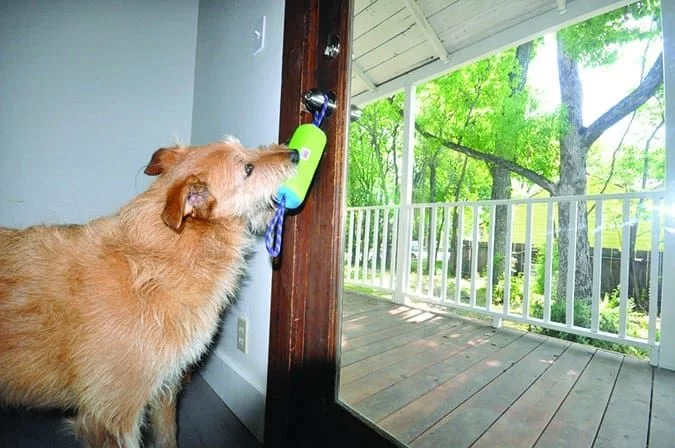Why Bathroom Training is Important for Your Dog
Training your dog to go to the bathroom outside is one of the most important and foundational skills you’ll teach your furry friend. I’ve gone through this process myself with my dog, Max, and I know firsthand that patience and consistency are key. A dog who understands bathroom routines not only keeps your home clean, but also feels more comfortable and secure in their environment. Potty training might seem like a daunting task at first, but with the right approach, it can be a smooth and rewarding experience for both you and your dog.
The Basics of Bathroom Training
Before we dive into the training steps, it’s essential to understand the basics of why dogs need consistent bathroom habits. Dogs, like us, have natural instincts and needs when it comes to eliminating waste. As an owner, it’s your job to provide them with the appropriate outlets to relieve themselves. Here’s what you’ll need to know before starting the training process:
- Consistency: Dogs thrive on routine. The more consistent you are, the faster your dog will learn where and when to go.
- Patience: Just like any other type of training, bathroom habits take time. Dogs need positive reinforcement and a lot of patience.
- Clear Boundaries: It’s important that your dog understands where the appropriate bathroom area is, and that they only go there.
Step-by-Step Guide to Training Your Dog to Go Outside
1. Set a Routine
The first step in potty training is setting a consistent schedule. This is crucial, as dogs learn better when they have regular opportunities to go outside. I set a specific routine for Max where I took him outside first thing in the morning, after every meal, and just before bedtime. This helped him anticipate when it was time to go out. In fact, within a few days of following this schedule, Max started to associate the routine with bathroom time, which made the process much easier.
2. Take Your Dog Outside Frequently
In addition to a routine, it’s important to take your dog outside frequently, especially in the early stages of training. Puppies and dogs that have not yet been trained often need to go outside every couple of hours. Whenever Max showed signs that he needed to go out—like sniffing around or pacing—I would take him outside right away. This consistency is vital for your dog to learn when and where they should go.
3. Choose a Bathroom Spot
Dogs prefer to relieve themselves in the same spot each time. This is why it’s essential to choose a designated area outside for your dog to use as their bathroom. For me, I chose a quiet corner in the yard, away from distractions. Whenever Max went outside, I took him to the same spot, and over time, he learned that this was the area where he should go. Stick to one area consistently to help reinforce the habit.
4. Use Positive Reinforcement
Positive reinforcement is one of the most powerful tools in bathroom training. I always made sure to praise Max immediately after he went to the bathroom outside. I would give him a treat and a lot of verbal praise, saying things like “Good boy, Max!” This encouraged him to associate going outside with something positive. Positive reinforcement can help your dog learn quickly, and it strengthens the bond between you and your dog.
5. Watch for Signs
When your dog needs to go to the bathroom, they often give off subtle signs, such as sniffing the ground, pacing, or whining. I became very familiar with these signs early on. Whenever Max started to exhibit any of these behaviors, I immediately took him outside to his designated bathroom spot. Recognizing these signs early and acting quickly can help prevent accidents inside.
6. Be Patient with Accidents
Accidents will happen, especially in the beginning stages of training. I remember a few instances when Max had accidents inside the house. When this happened, I remained calm and did not scold him. Instead, I gently cleaned up the mess and made sure to take him outside more frequently. Punishing a dog for accidents does not help and can actually cause confusion. It’s essential to be patient and keep the experience positive so your dog learns faster.
7. Gradually Extend Time Between Bathroom Breaks
As your dog becomes more consistent with going outside, you can start to extend the time between bathroom breaks. I gradually increased the amount of time between Max’s bathroom trips as he became more reliable in his routine. This helped him gain control over his bladder and reinforced the idea that he could hold it until we went outside.
8. Be Aware of Special Needs
It’s important to remember that some dogs may have special needs that affect their bathroom habits. For example, senior dogs or dogs with health issues may need more frequent bathroom breaks. I learned this when Max got older and started having trouble holding it for long periods of time. If your dog has specific needs, you may need to adjust the frequency of their bathroom breaks and ensure they have easy access to their bathroom area.
Real-Life Story: My Experience with Max
When I first brought Max home as a puppy, I was determined to get him potty trained quickly. I followed a consistent routine of taking him outside every couple of hours, using positive reinforcement, and watching for signs that he needed to go. It wasn’t always easy—there were some accidents along the way—but within a few weeks, Max was consistently going outside. He even started to whine at the door when he needed to go. Watching him learn and succeed was one of the most rewarding experiences, and it showed me the importance of patience and consistency.
Common Mistakes to Avoid
1. Punishing Your Dog for Accidents
Punishing your dog for accidents can cause confusion and make the training process harder. Instead, focus on positive reinforcement and redirecting your dog to the proper bathroom area.
2. Inconsistent Bathroom Breaks
If you’re not consistent with taking your dog outside, they may become confused and have accidents inside. Make sure to take your dog outside regularly, especially in the early stages of training.
3. Not Paying Attention to Your Dog’s Needs
Every dog is different, and it’s important to be aware of their specific needs. Some dogs need more frequent bathroom breaks than others, especially puppies or senior dogs. Pay attention to your dog’s signs and adjust your routine accordingly.
Conclusion
Training your dog to use the bathroom outside is a rewarding and essential part of building a positive relationship with your pet. By setting a routine, using positive reinforcement, and being patient, you can successfully teach your dog to go outside. Remember that every dog learns at their own pace, so be consistent and understanding. With time and effort, you and your dog will have a smooth and successful potty training experience!












